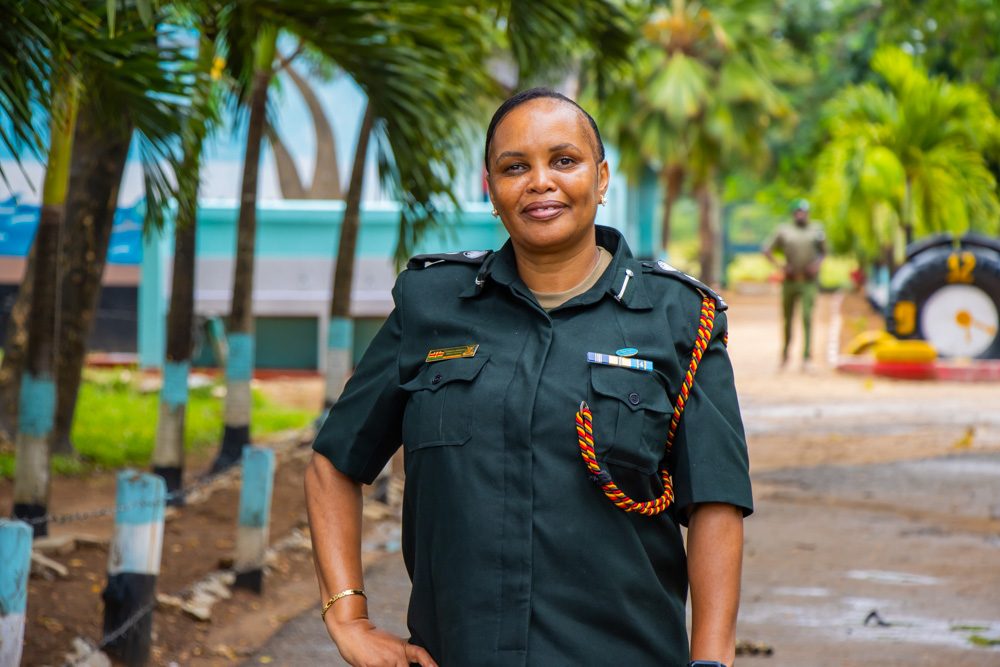Our firm belief that digital equity is fundamental for social justice drives Close the Gap to go beyond mere hardware provision. Instead, we are at work to architect comprehensive ecosystems that transform technology access into genuine economic opportunity, particularly for communities facing systemic barriers. This view was translated into action in 2024 though our partnership with the Shimo La Tewa Borstal and Boys Education Centre in Mombasa, Kenya. This project allows young juveniles to connect to the world outside the walls of the corrective system, keeping them informed and tied to our so rapidly evolving world.
Building Futures Through Digital Entrepreneurship
Together with our implementation partner TechKidz Africa, we deployed 20 computers in the Shimo La Tewa Borstal and Boys Education Centre in Mombasa. Installing a computer lab creates a digital skills training programme for young people in the juvenile justice system. This is an investment that has catalysed remarkable transformations. The programme engaged 25 trainees aged sixteen to 22, of whom 84% had never previously accessed a computer. During a period of twelve months, the participants received comprehensive training in coding, robotics, graphic design, and web development skills. The courses and skills are always intentionally selected to complement their existing vocational training and open pathways to self-employment.

"I'm building a website for my tailoring business it's how I'll connect with customers beyond these walls."
Measurable Impact: From Skills to Economic Self-Sufficiency
The outcomes of the program demonstrate how targeted digital education creates tangible economic opportunities. 92% of participants now apply their digital skills directly to vocational pursuits. A young plumber designs marketing materials for his future business. Another trainee is building an e-commerce presence to reach customers beyond geographical constraints. 48% intend to seek formal employment leveraging their new competencies, while 40% are developing entrepreneurial ventures. Perhaps most significantly, 100% have committed to continuing their technology education post-release, which is a powerful indicator of sustained engagement and self-directed learning. One participant articulated this transformation: "The graphic design skills I gained will help me market my plumbing services. This is my ticket to independence."
Officers report dramatic improvements in discipline, motivation, and peer mentorship
Systemic Change: Beyond Individual Transformation
The approach of Close the Gap recognises that sustainable impact requires institutional capacity-building, not just mere equipment donation. At Shimo La Tewa, we have witnessed how digital skills training creates ripple effects throughout the entire facility:
- Institutional culture shift: Officers report dramatic improvements in discipline, motivation, and peer mentorship. Trainees voluntarily arrive two hours before sessions begin, demonstrating what one senior officer called "hunger for change." Program participants have become role models, inspiring waiting lists for future cohorts.
- Policy integration: Working with facility leadership, we are embedding digital literacy into the core institutional curriculum, ensuring this initiative becomes permanent infrastructure rather than a temporary project.
- Staff capability development: Staff and teachers are the key figures who can make the difference for individual learning experiences. Apart from focusing on the young trainees, we are empowering facility staff to deliver technology education independently, creating in-house expertise that will serve future generations of young people. They invest in the students' perspectives and are an important force that is close to our hearts.
- Community reintegration networks: Through partnerships with local businesses and civil society organizations, we are establishing alumni support systems that facilitate job placements and reduce recidivism, addressing the critical challenge of post-release economic integration.
As Superintendent Justina Mwangombe of the Borstal Institute observes: "This programme proves that innovation belongs everywhere, even in correctional spaces. When we invest in skills, we invest in humanity."
Technology should be an equaliser, not a divider.

The Close the Gap Model: Strategic Partnership for Systemic Change
Our work at the Shimo La Tewa Borstal and Boys Education Centre illustrates our approach to digital inclusion:
- Equal opportunity creation: We prioritise communities experiencing the greatest digital exclusion, recognising that access to technology is a prerequisite for economic participation in modern economies.
- Entrepreneurship enablement: Rather than creating dependency, we build capabilities for economic self-determination. Our participants are not just learning to use technology, but they are also developing business tools and marketable skills in light of future perspectives.
- Ecosystem development: We invest in institutional capacity, policy frameworks, and community partnerships that ensure initiatives become self-sustaining.
- Dignity-centred design: We work with communities, not for them, recognizing that the people who experience barriers are best positioned to identify their solutions.
A Collaborative Vision for Digital Equity
Technology should be an equalizer, not a divider. Yet across sub-Saharan Africa, the digital divide perpetuates economic exclusion, particularly for vulnerable youth. Close the Gap exists to change this reality through strategic partnerships that transform hardware into opportunity. Our collaboration with Shimo La Tewa demonstrates what becomes possible when stakeholders commit to genuine inclusion: young people who entered the facility without basic digital literacy are now creating businesses, designing marketing campaigns, and building websites. They are not just prepared to participate in the digital economy; they are learning how to shape it. As one trainee pledged: "I'll use coding to automate workflows and make life easier for others. This is just the start." At Close the Gap, we are committed to ensuring that it is far from the finish.
_11zon.jpg)

.avif)
.jpg)
_11zon.jpg)

